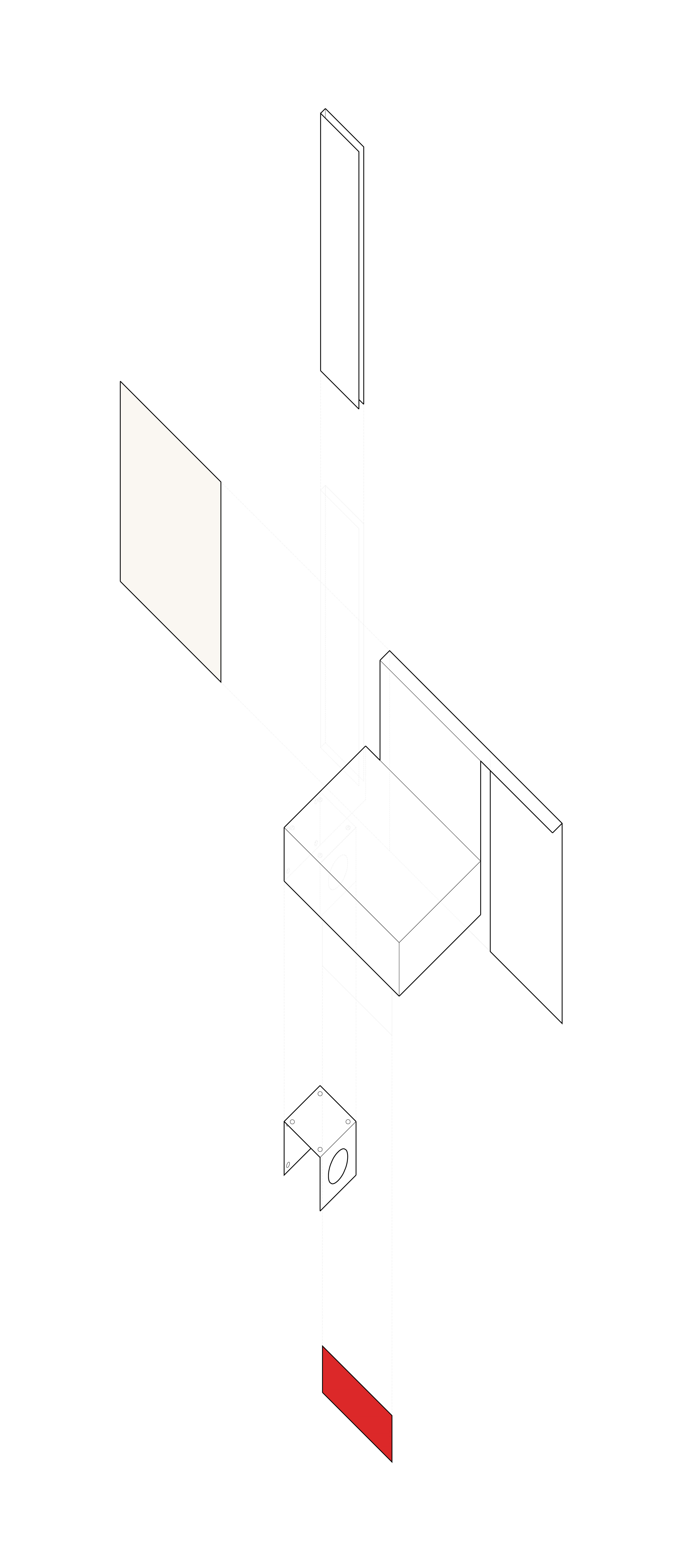Theo van Doesburgh’s manifesto recognizes the need for plasticity, and opens up the language of architecture to more creative potential. Elementarism denies the idea of absolute symmetrical static state, but instead an asymmetrical balance between the static and the dynamic. It denies the need for aesthetic purposes, and proposes a sense of functional reasons and careful calibration of the composition. The manifesto posits that architecture shouldn’t be reliant on symmetry and hierarchy, but instead should look for the sense of occult balance.
Three manifesto points were derived as they are the most intriguing and suitable for the metal lamp design: the function, the economy, and the color as the new decoration. Through a series of transformations under the guidance of the manifesto, a form is created that echos the ideas of Theo van Doesburg, in opposition to the natural, symmetrical structure.
The volumnized spaces can be clearly observed through the folded planes, yet there are no “boundaries” between the volumes. This sense of intersecting volumnized spaces achieved through folded planes allows the light to be transmitted out in various directions, and creates a sense of projection of the light and planes.
By utilizing a bold red color with reflective metal sheets, the lighting effect is exaggerated and a sense of overlapping of interior and exterior spaces is created. The light source is hidden to allow the senses to focus on the space-making composition of the lamp.
Duration: 4 Weeks
Instructors: José Pertierra-Arrojo, Jonathan Kline

